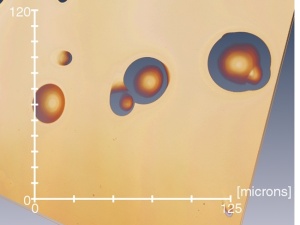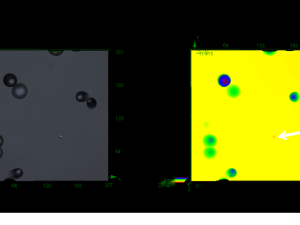Key Role of Nitrate in Phase Transitions of Urban Particles: Implications of Important Reactive Surfaces for Secondary Aerosol Formation
Abstract
Ammonium sulfate (AS) and ammonium nitrate (AN) are key components of urban fine particles. Both field and model studies showed that heterogeneous reactions of SO2, NO2, and NH3 on wet aerosols accelerated the haze formation in northern China. However, little is known on phase transitions of AS-AN containing haze particles. Here hygroscopic properties of laboratory-generated AS-AN particles and individual particles collected during haze events in an urban site were investigated using an individual particle hygroscopicity system. AS-AN particles showed a two-stage deliquescence at mutual deliquescence relative humidity (MDRH) and full deliquescence relative humidity (DRH) and three physical states: solid before MDRH, solid-aqueous between MDRH and DRH, and aqueous after DRH. During hydration, urban haze particles displayed a solid core and aqueous shell at RH = 60–80% and aqueous phase at RH > 80%. Most particles were in aqueous phase at RH > 50% during dehydration. Our results show that AS content in individual particles determines their DRH and AN content determines their MDRH. AN content increase can reduce MDRH, which indicates occurrence of aqueous shell at lower RH. The humidity-dependent phase transitions of nitrate-abundant urban particles are important to provide reactive surfaces of secondary aerosol formation in the polluted air.
Full article:
Source: Preview Image: ilozavr/Shutterstock



